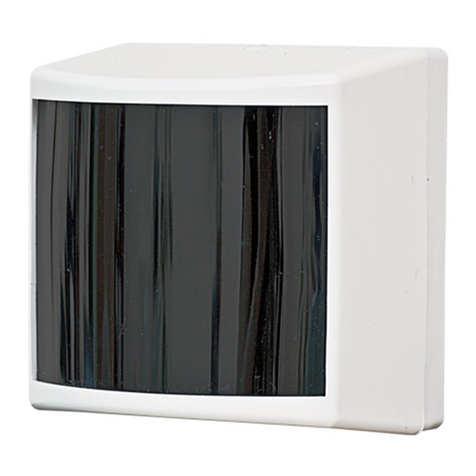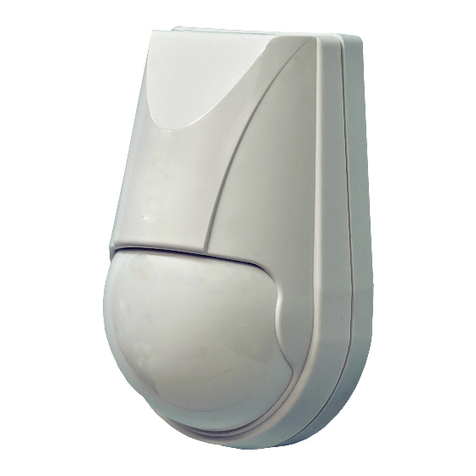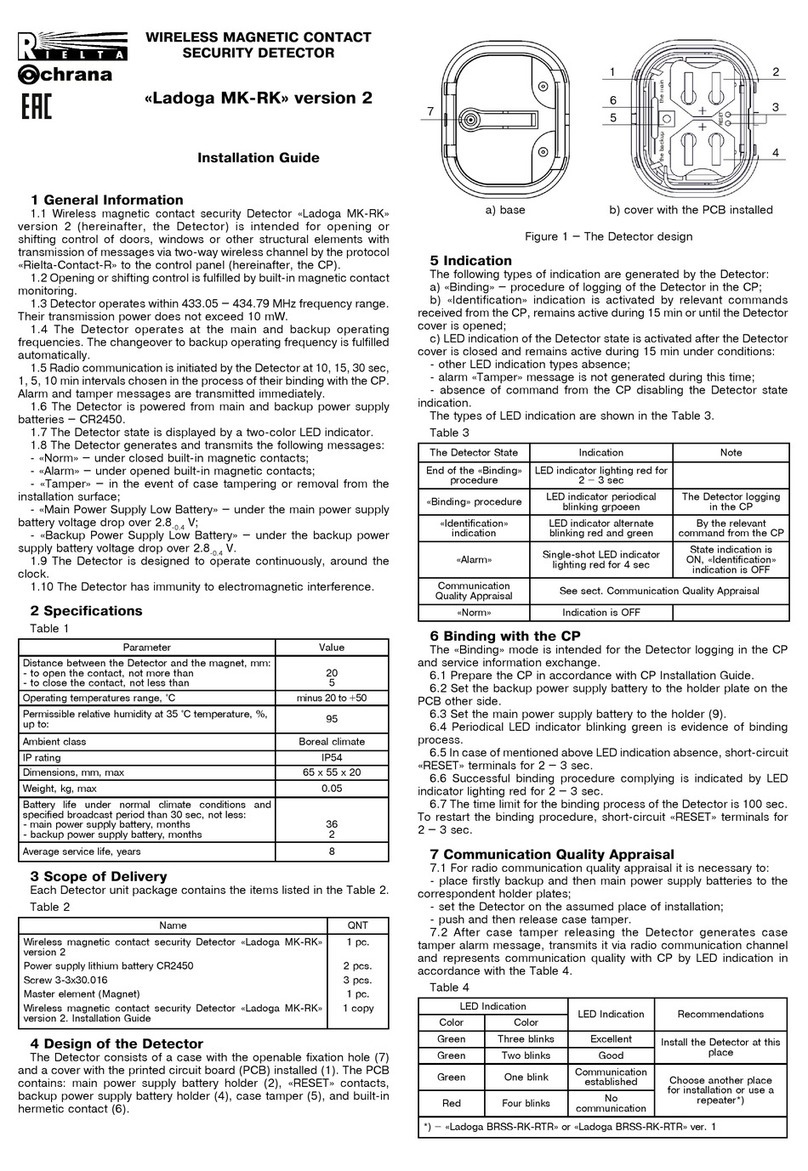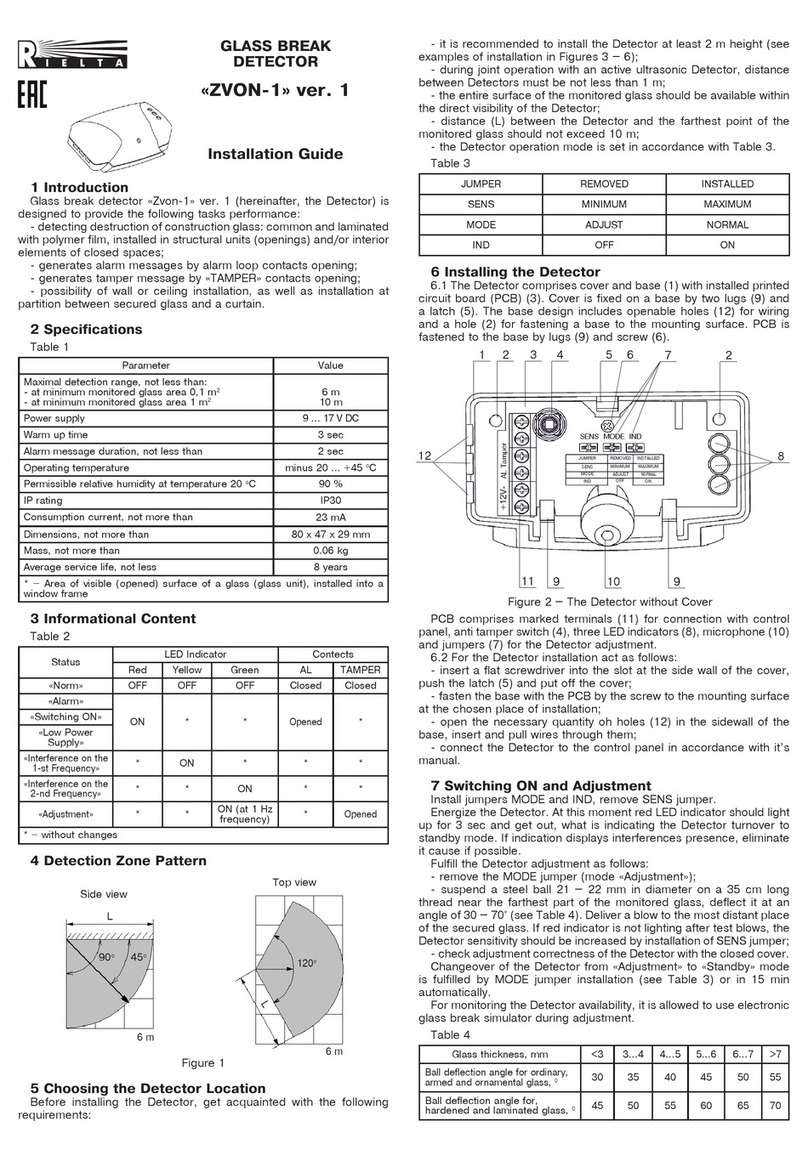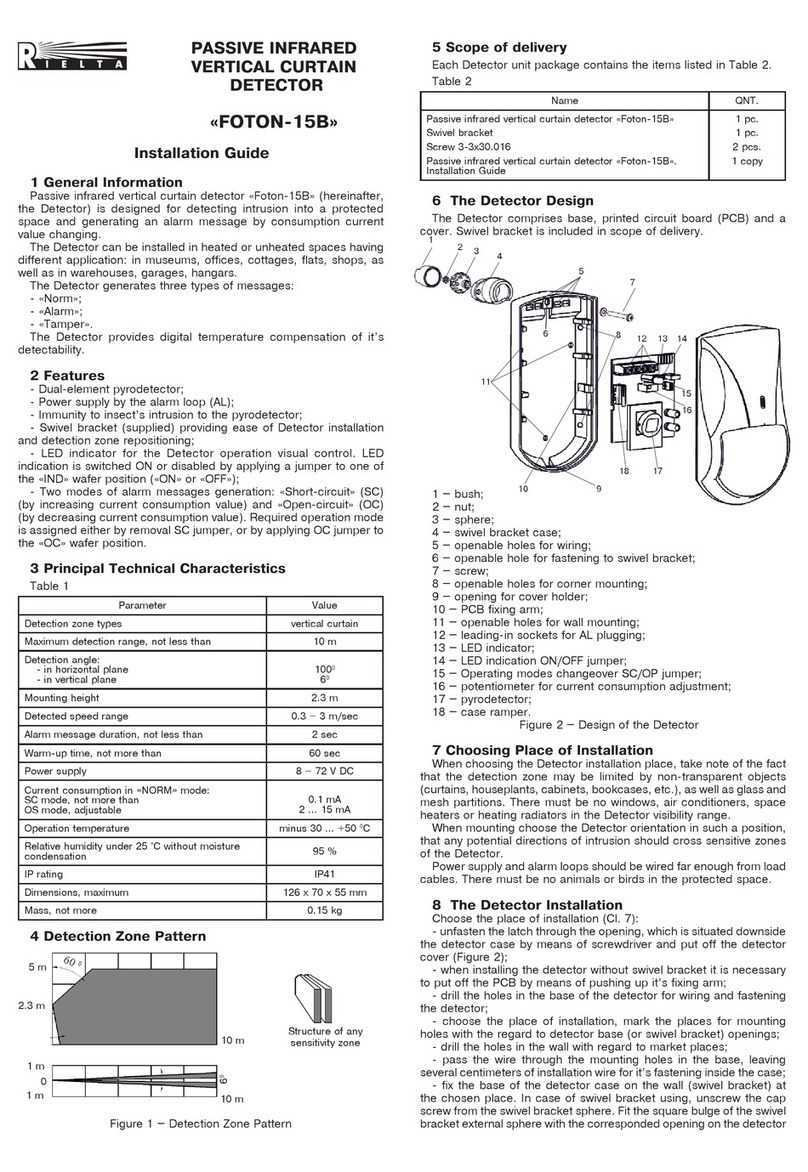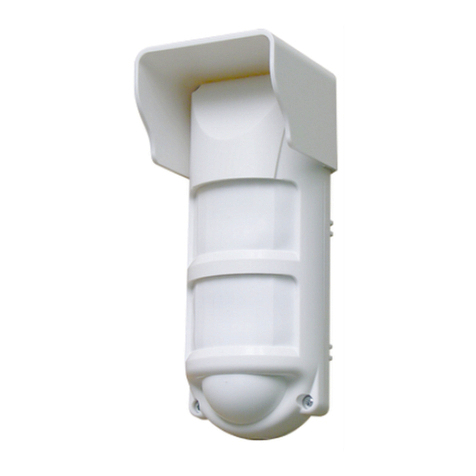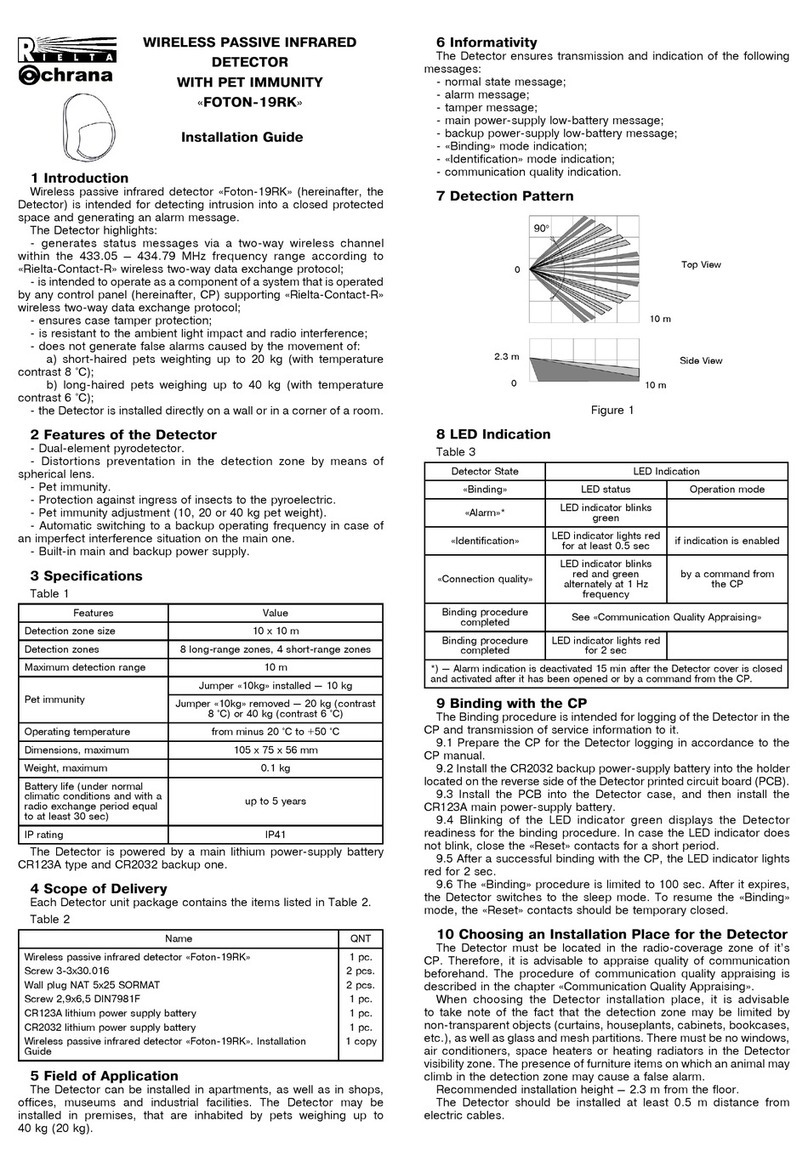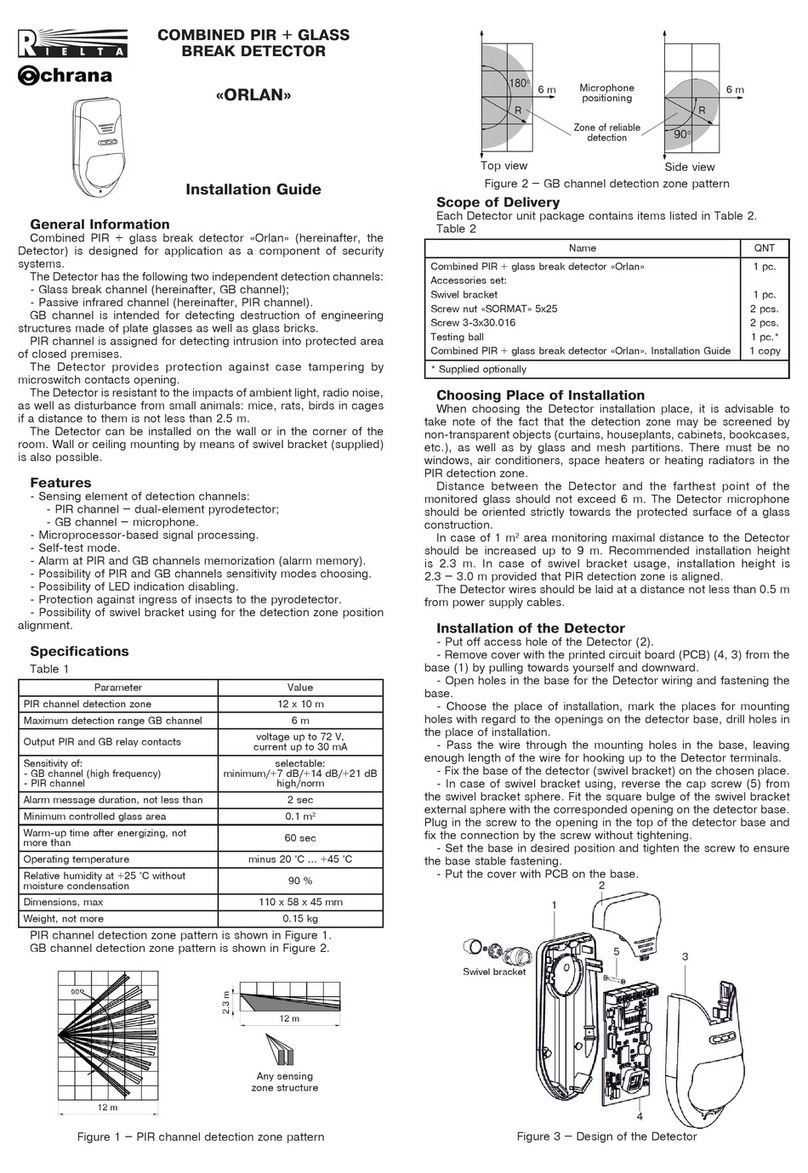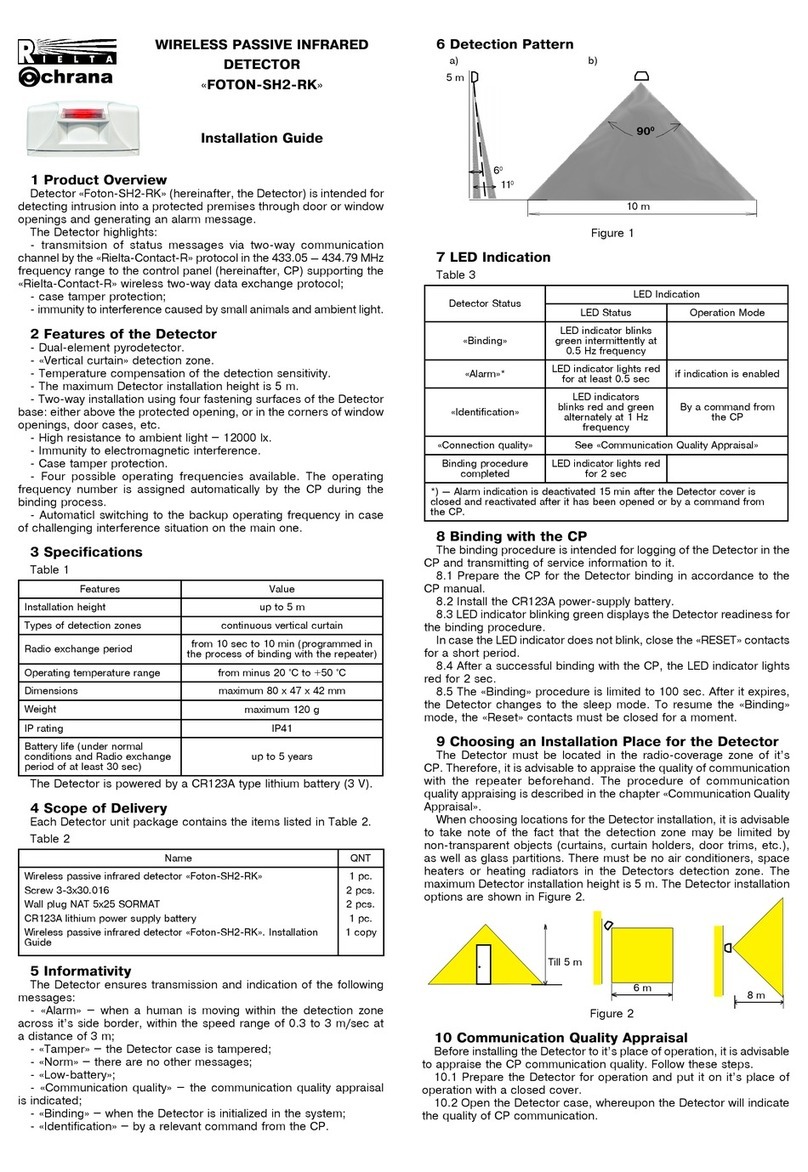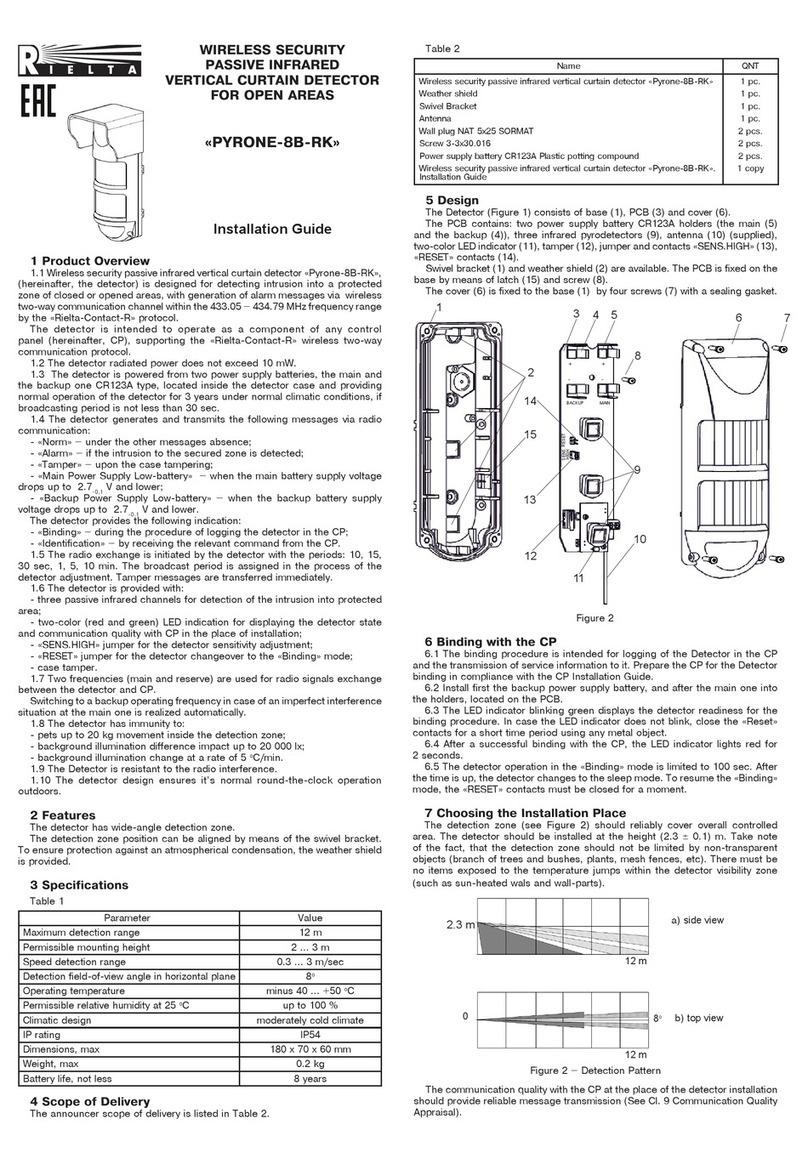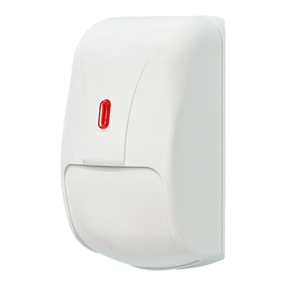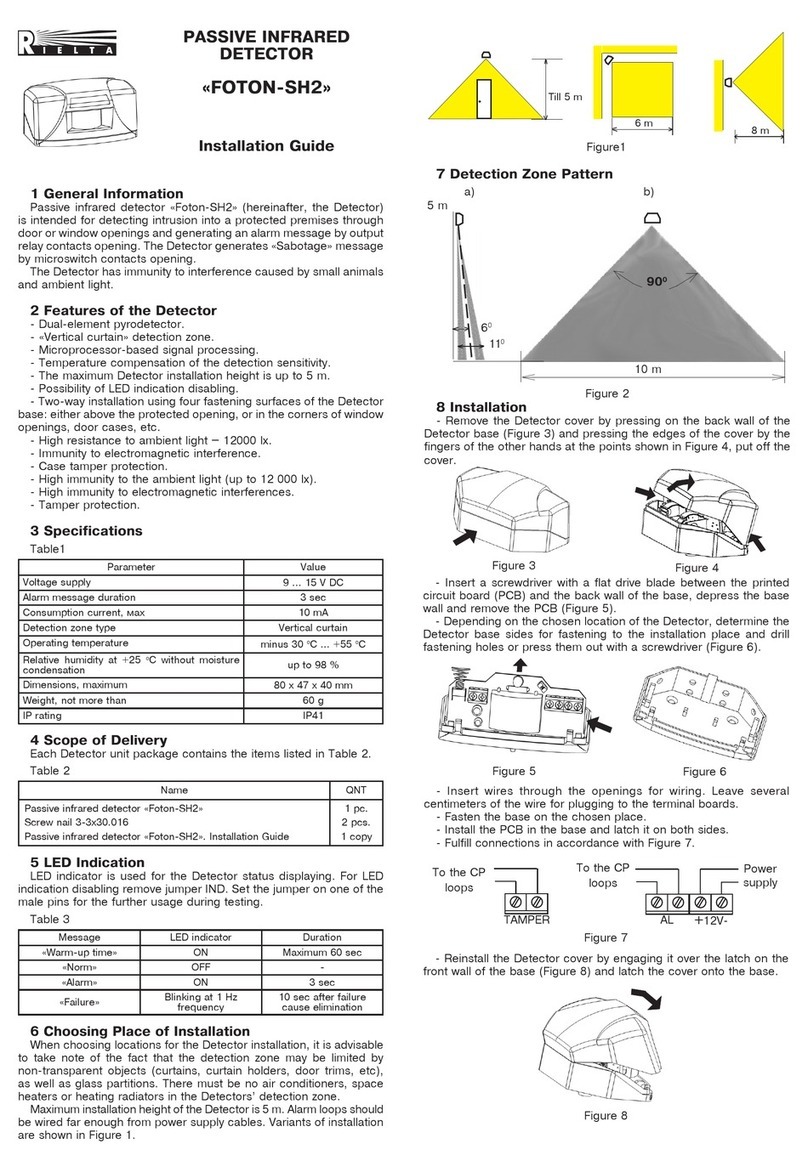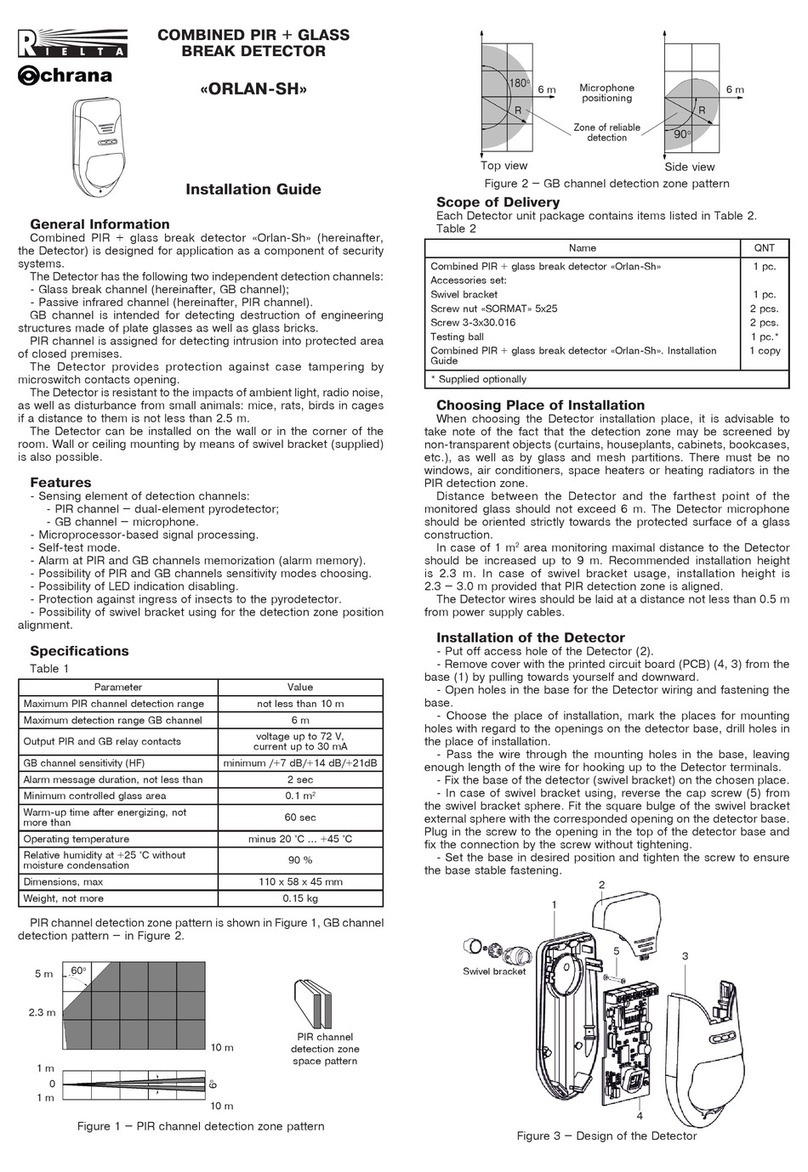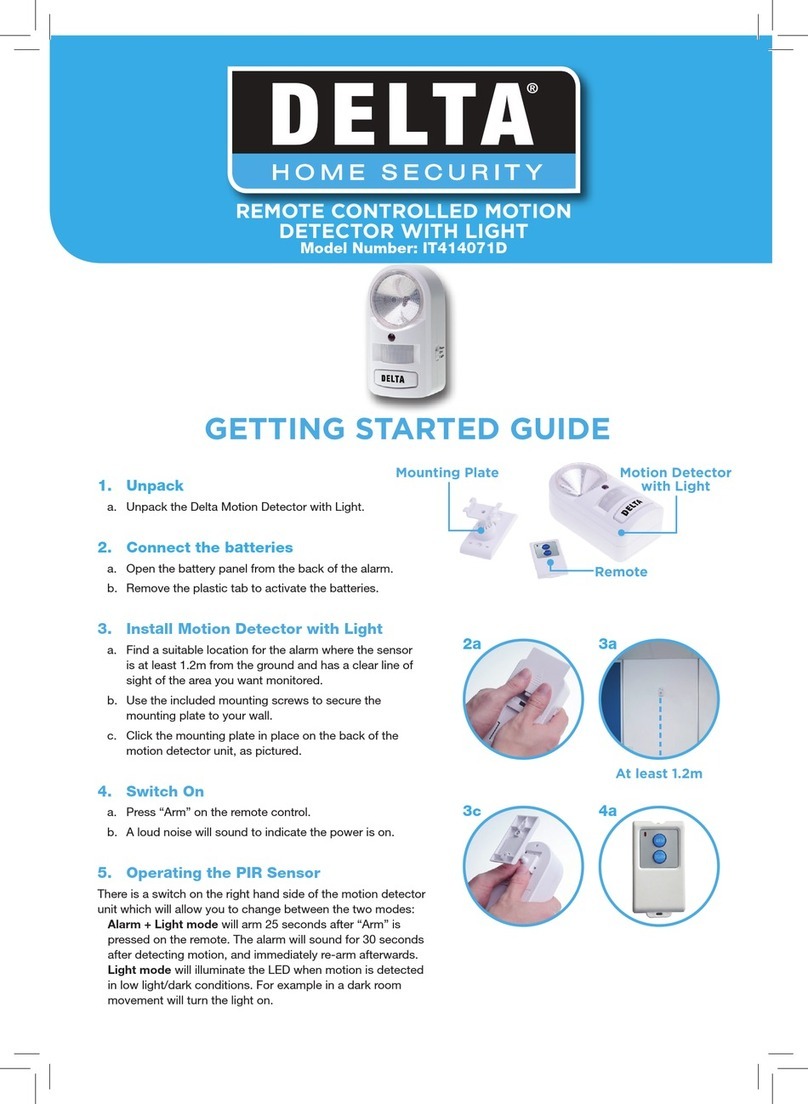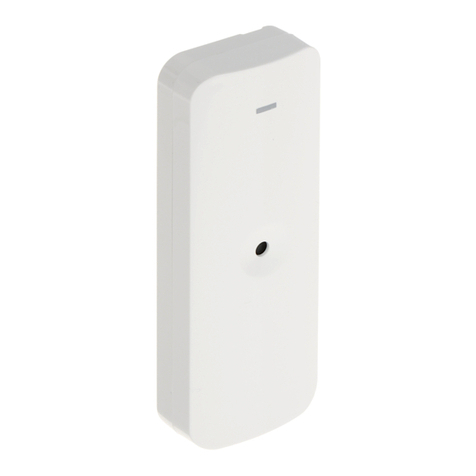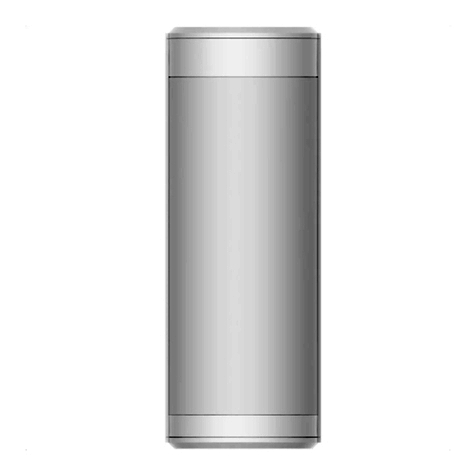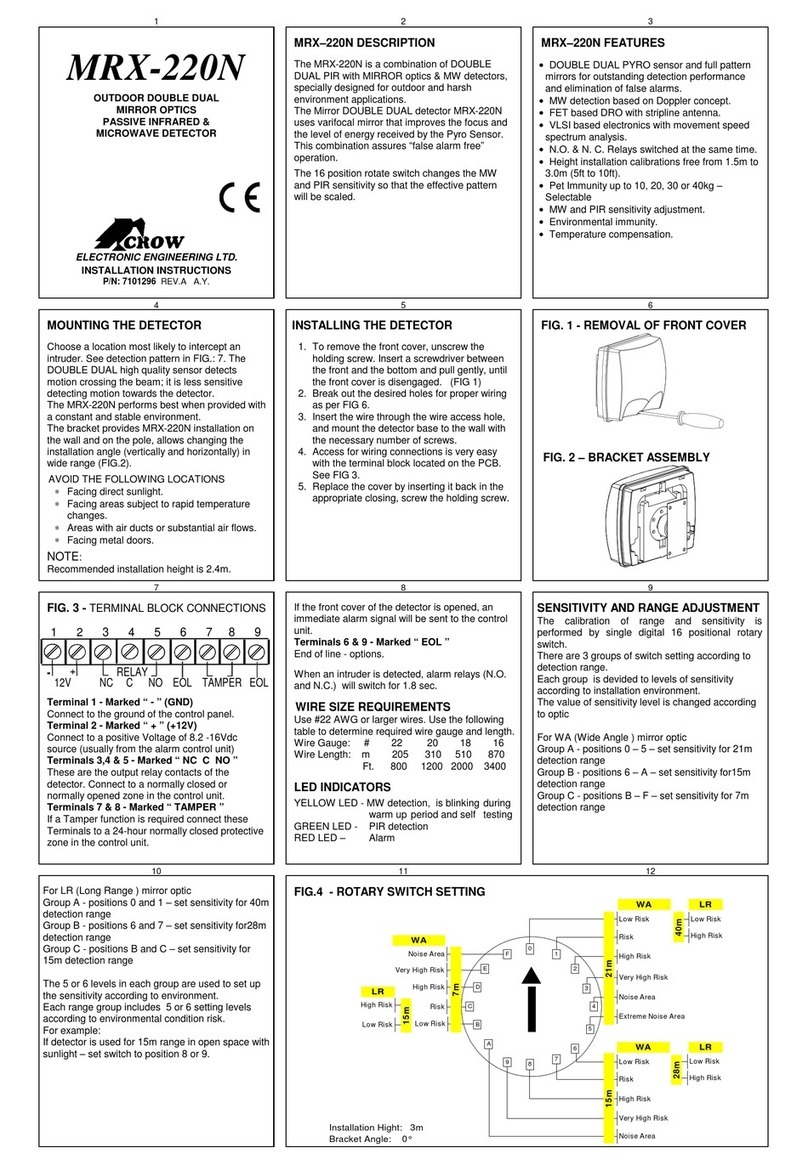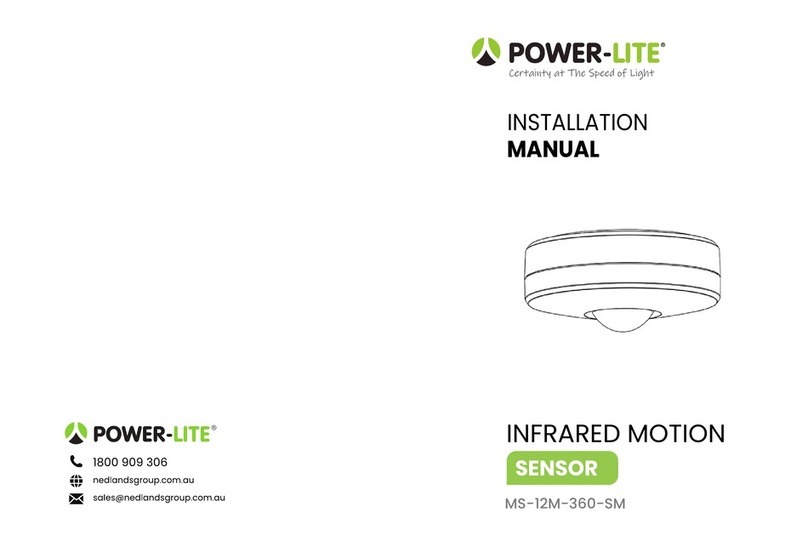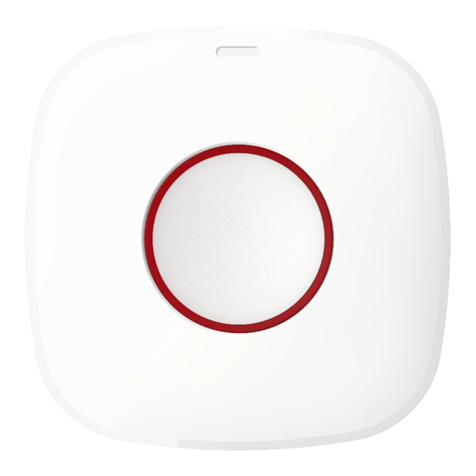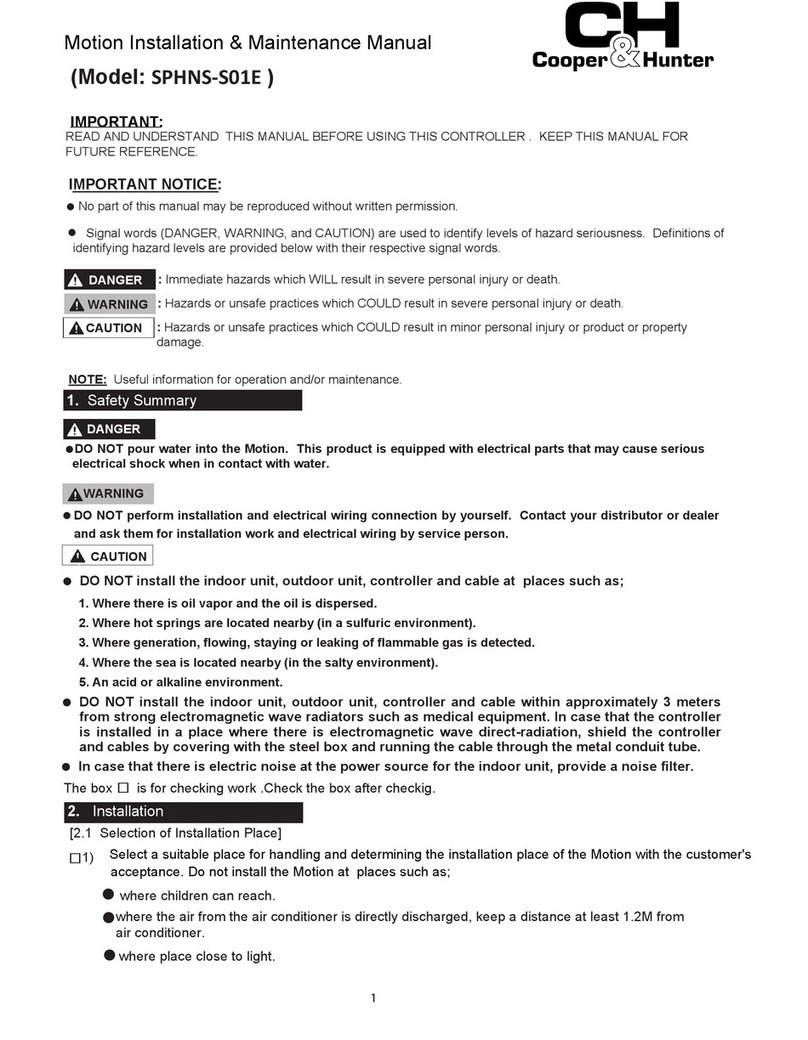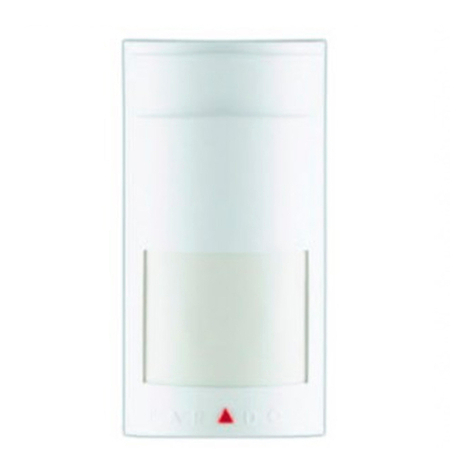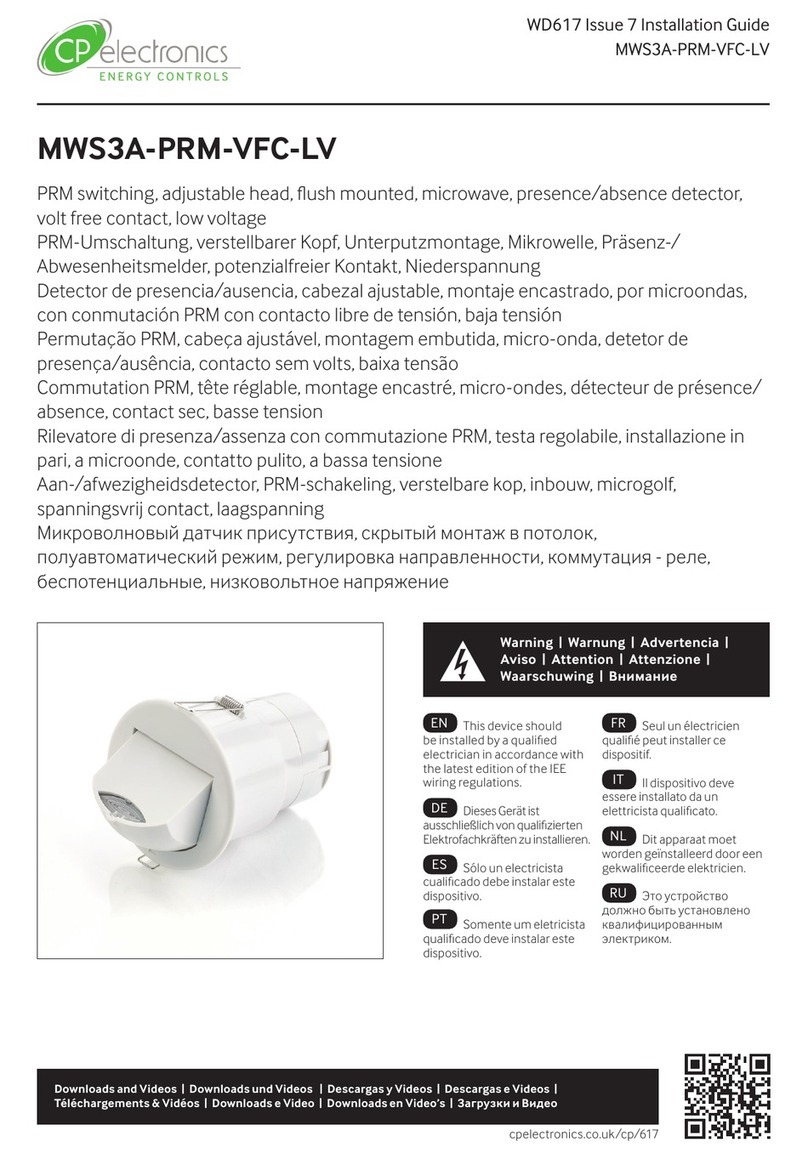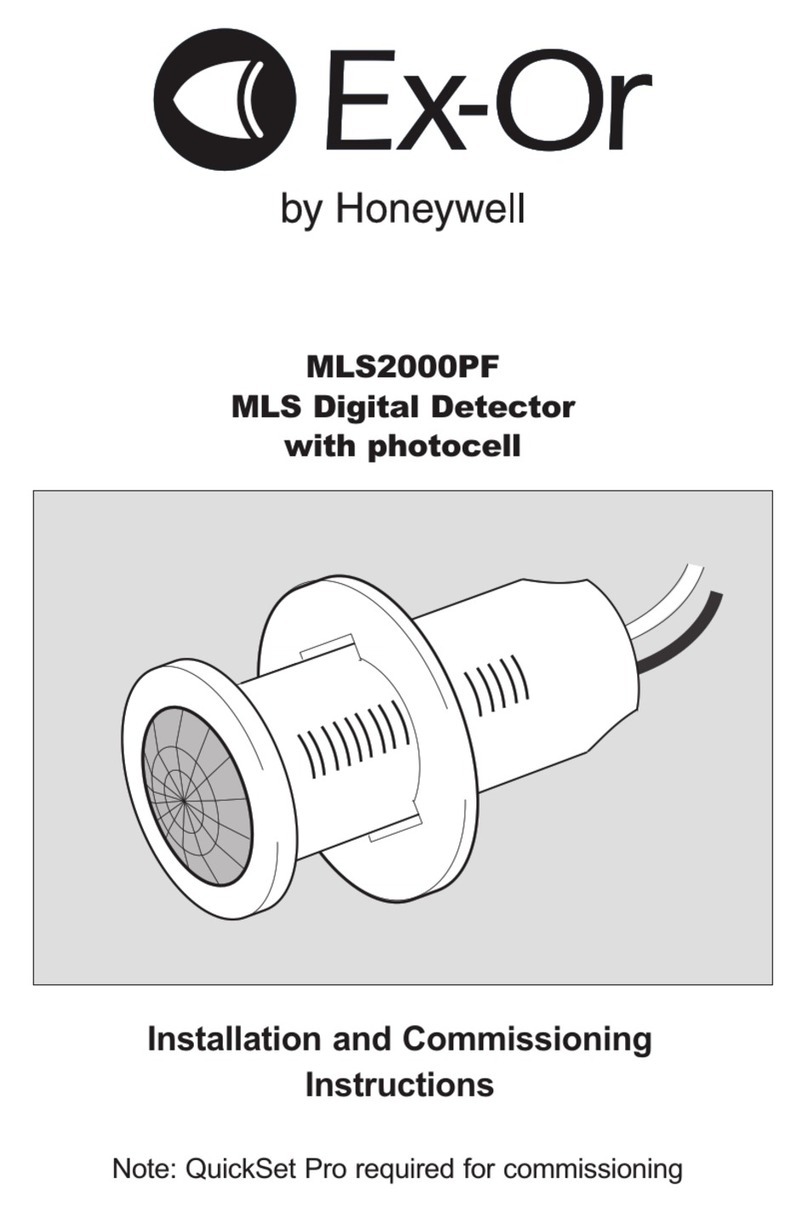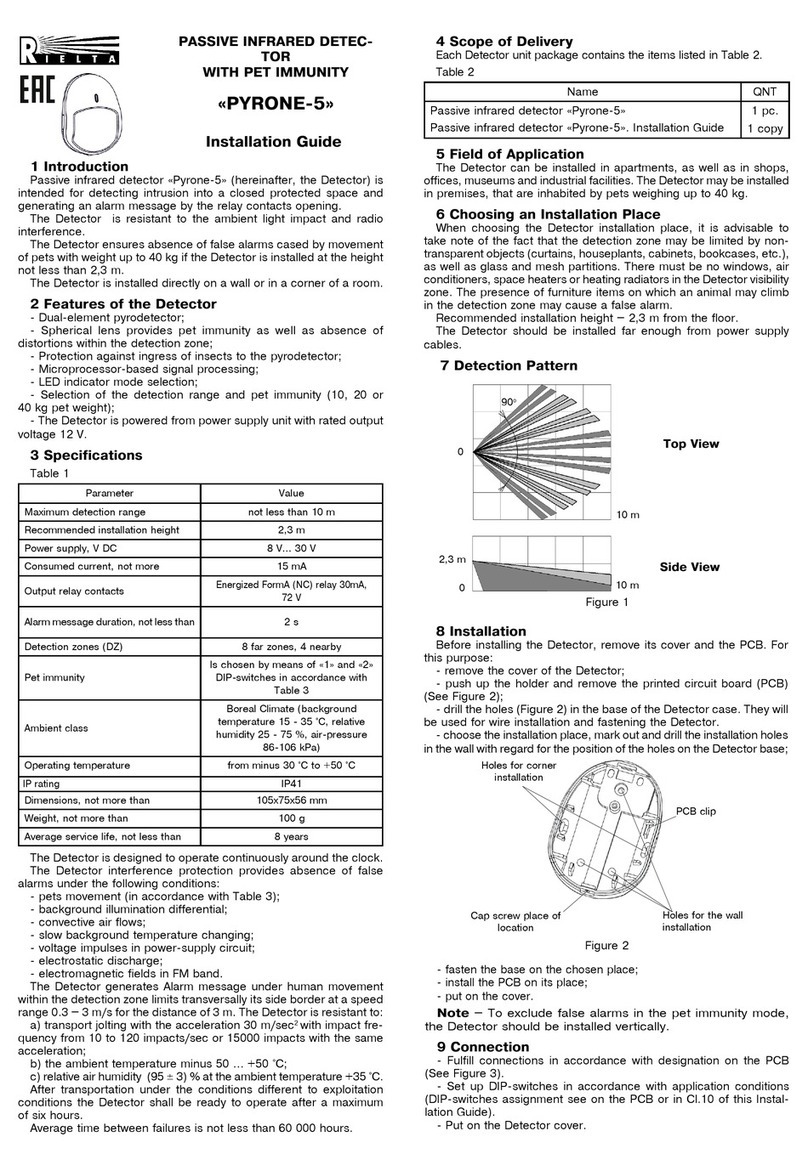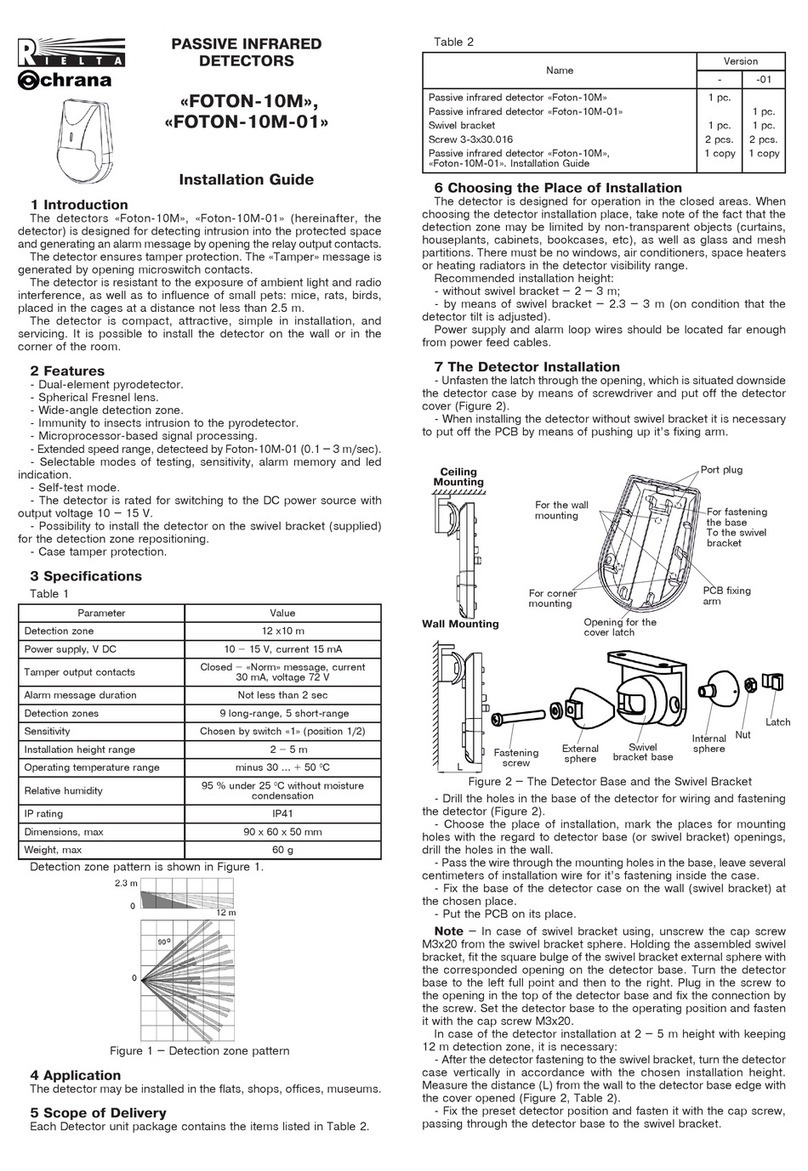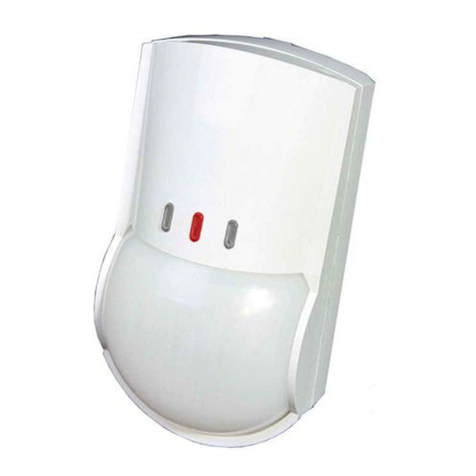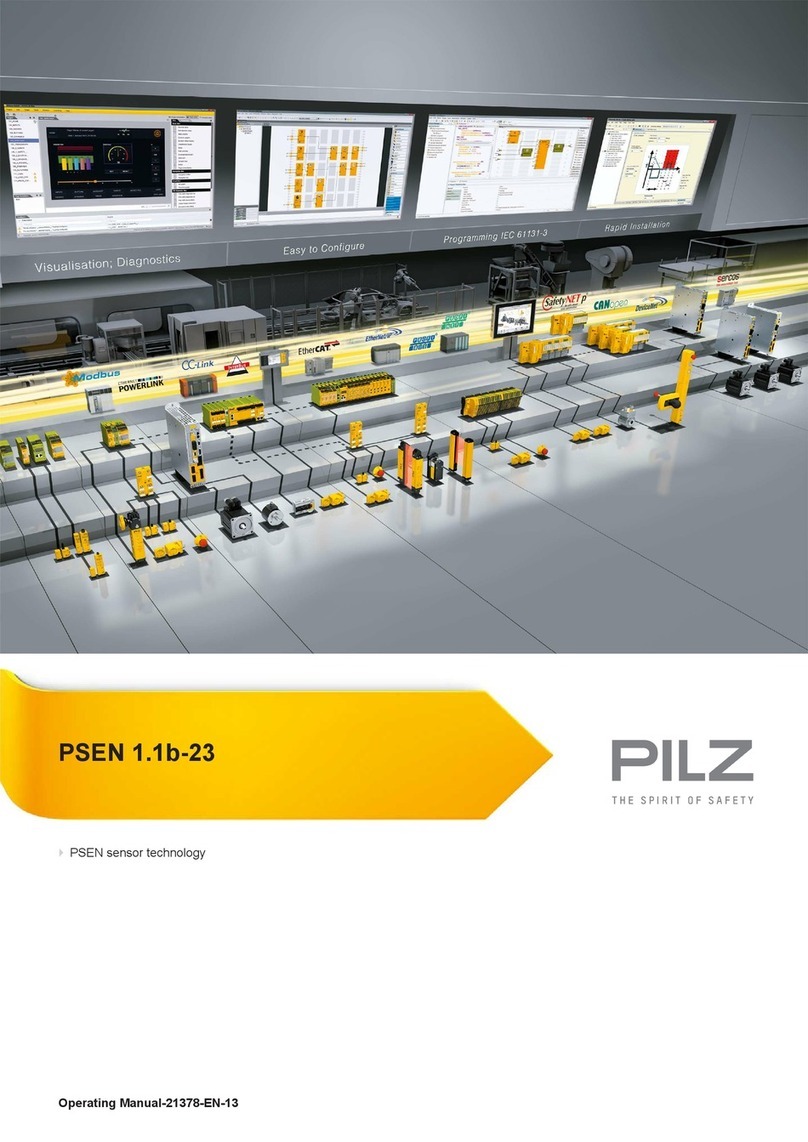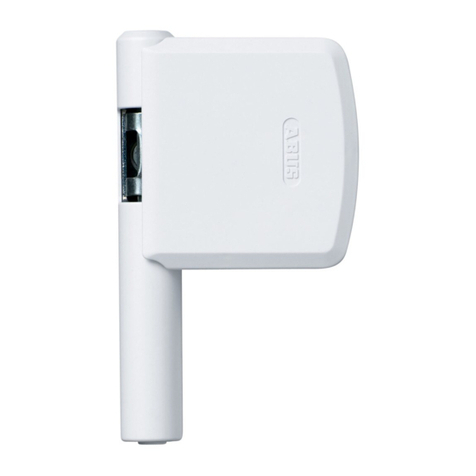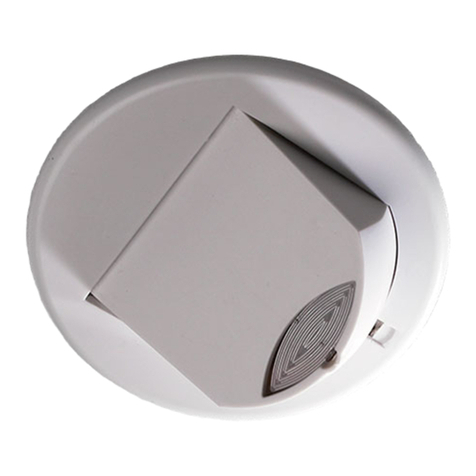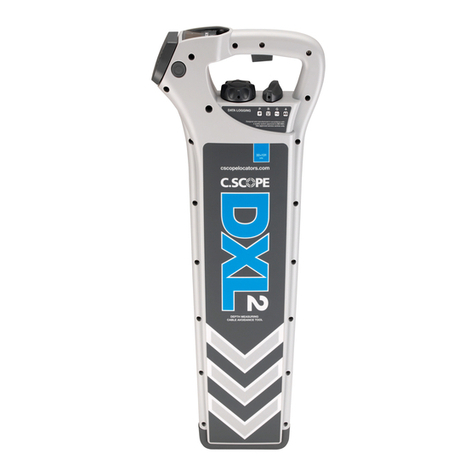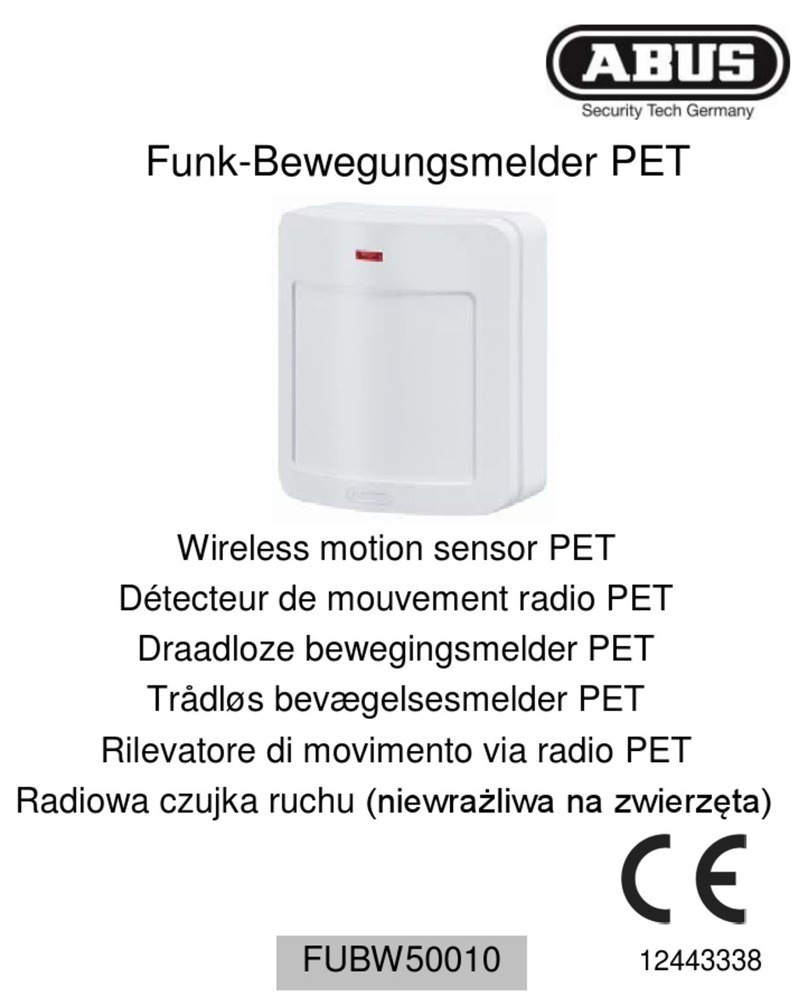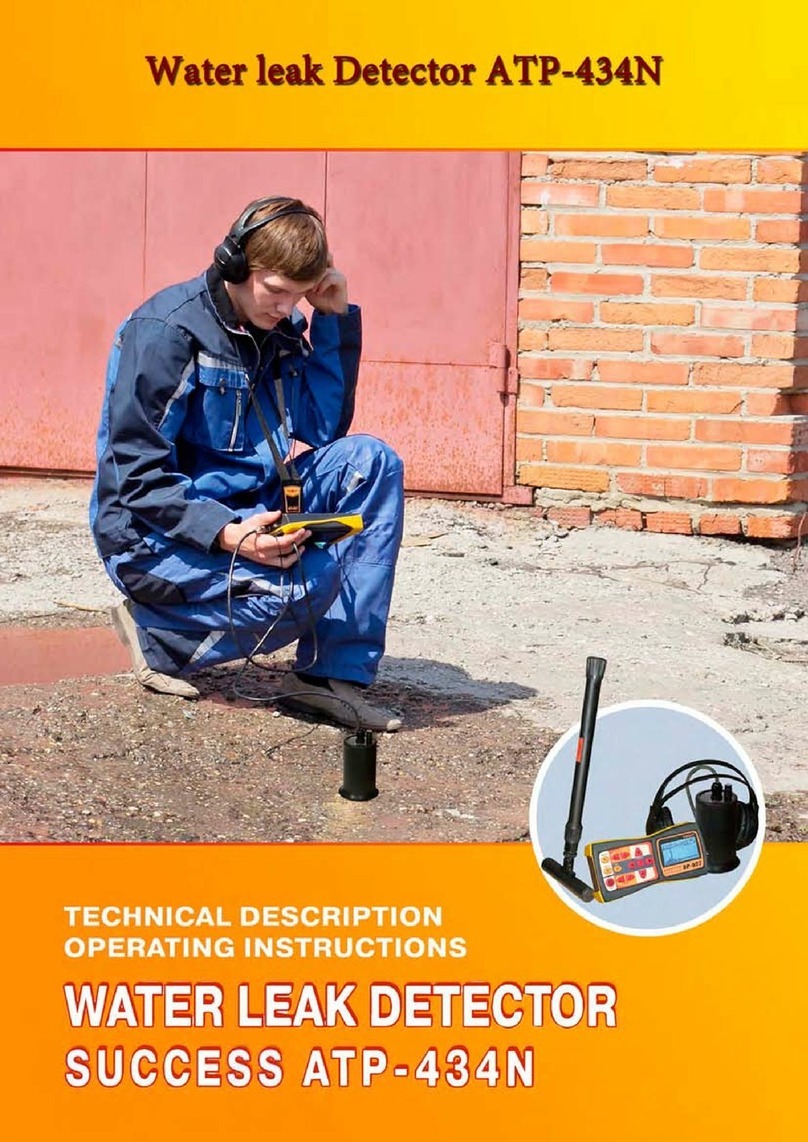Rev. 1 of 30.10.18
¹Ý00510
v.10.1
«RIELTA» JSC, www.rielta.ru
Tel./fax: +7 (812) 233-0302, 703-1360,
Made in Russia
Table 4
LED Indication
Communication
Quality Appraisal
Recommendations
Color Mode
Green Three blinks Excellent Install the Detector at this
place
Green Two blinks Good
Green One blink Communication
established Choose another place
for installation or use a
repeater*)
Red
Series of blinks
No
communication
*) – «Ladoga-RK» system repeater
8 Installation
When choosing the Detector installation place, it is advisable to take note
of the fact that the detection zone may be limited by non-transparent objects
(curtains, houseplants, cabinets, bookcases, etc.), as well as glass and
mesh partitions. There must be no windows, air conditioners, space heaters
or heating radiators in the Detector visibility zone. Maximal mounting height
of the Detector is 5 m. Variants if installations are shown in Figure 2.
8 m
6 m
Up to 5 m
8.1 Remove the Detector cover by pressing on the back wall of the
Detector base (Figure 3) and pressing the edges of the cover by the fingers
of the other hands at the points shown in Figure 4.
8.2 Insert a flat screwdriver between the PCB and the back wall of the
base, depress the base wall and remove the PCB (Figure 5).
8.3 Depending on the chosen location of the Detector, determine the
Detector base sides for fastening to the installation place and drill fastening
holes or press them out with a screwdriver (Figure 6).
External detector
Rterm
8.5 Fasten the base at the chosen place.
8.6 Install the PCB in the base and latch it on both sides.
8.7 Reinstall the Detector cover by engaging it over the latch on the
front wall of the base and latch the cover onto the base.
9 Functional Testing
9.1 Start walking through the detection zone at a speed rate
0.5 – 1 m/sec. When two zone lines are crossed, the Detector transmits
an alarm message. Make sure the «Intrusion to Zone 1» message has
been received in the respective zone of the CP.
9.2 Cross the detection zone on the other side and define it´s other
border. When there is no motion in the detection zone, alarm messages
should not be generated.
9.3 In case the detection zone is impaired by some objects (curtain
holders, curtains, door trims), the position of the Detector should be
changed.
ATTENTION! The Detector should be checked at least annually in
order to test it´s performance.
10 Storage and Transportation
10.1 The detector are transported without power supply battery. The
detector in their original packaging are resistant to:
- transport jolting with the acceleration up to 30 m/sec2at impact
frequency range from 10 to 120 per minute or 15 000 strikes;
- ambient temperature range minus 50 ... +50 °Ñ;
- relative air humidity (95 ± 3) % at a temperature +35 °Ñ.
10.2 The detector in original package may be transported by any
means of transportation in closed vehicles over any distances in
compliance with the existing shipping rules concerning the respective
means of transportation.
10.3 After transportation under the conditions different to exploitation
conditions the detector shall be ready to operate after a maximum of
six hours.
10.4 The storage room shall be free from current-conducting dust,
acid vapors, alkali and gases that cause corrosion and destroy insulation.
11 Manufacturer’s Guarantees
11.1 The Manufacturer guarantees conformity of the Detector to
it´s Technical Specifications if conditions of transportation, storage,
assembling and operation are observed.
11.2 The guaranteed storage period is 63 months since the date of
manufacturing the Detector.
11.3 The guaranteed period of operation is 60 months since the date
of commissioning within the storage period guaranteed.
11.4 The Detectors that are found to non-conforming to it´s Technical
Requirements shall be repaired by the Manufacturer, provided the
installation and operation rules have been complied with.
Note – Warranty obligations are not applied to the power-supply
batteries.
12 Acceptance and Packing Certificate
Wireless passive infrared detector «Pyrone-SH2-RK» manufactured
in accordance with current technical documentation is classified as fit
for operation and is packed by «RIELTA» JSC.
Packing date _______________________________
month, year
Figure 3 Figure 4
Figure 5 Figure 6
Figure 2
Figure 7
8.4 If necessary, connect an external detector (for example, hermetic
contact) to the connecting blocks as it shown in Figure 7. Hook up the
terminal (EOL) resistor Rterm (5.1 kΩresistor) to the end of the loop. The
length of the loops must not exceed 5 m. The connections must be soldered
or screwed.
